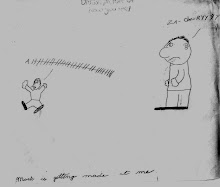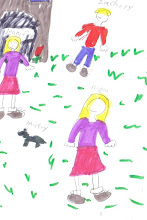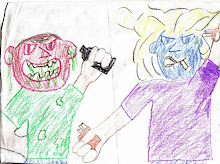Why Terrorist Tactics Employed by Batterers Are Not "PAS"
Leadership Council
September 16, 2009
As more and more abused women lose custody to batterers in family courts, they are wrongly embracing the very ideas that enabled their abusers to gain custody in the first place. False accusations of “parental alienation" are often used by batterers to gain custody and to defend against accusations of abuse.
Some unfortunate women after years of enduring domestic violence have lost custody to the batterers who abused them. In these cases, batterers have made good on their threat to attack their ex-partner in the place she is the most vulnerable—by taking her children away from her. After separation, these batterers continue to wage their campaign of manipulation and abuse by attempting to convince involved children that their mothers never loved them. Looking for a way to describe their batterers' behavior, some mothers have called what their batterer is doing "parental alienation syndrome."
In reality, what these women are describing from their ex-partners is better termed Domestic Violence by Proxy (DV by Proxy), a term first used by Alina Patterson, author of Health and Healing. DV by Proxy refers to a pattern of behavior which is a parent with a history of using domestic violence or intimidation, uses a child as a substitute when he no longer has access to his former partner. Calling this behavior “parental alienation” is not strong enough to convey the criminal pattern of terroristic behaviors employed by batterers.
When his victim leaves him, batterers often recognize that the most expedient way to continue to hurt his partner is to assert his legal rights to control her access to their children. By gaining control of the children, an abusive male now has a powerful tool which allows him to continue to stalk, harass and batter an ex-partner even when he has no direct access to her. Moreover, by emotionally torturing the child and severing the bond between children and their mother, he is able to hurt his intended victim -- the mother -- in a way she cannot resist.
DV by Proxy includes tactics such as: threats of harm to children if they display a positive bond to the mother, destroying favored possessions given by the mother, and emotional torture (for example, telling the child the mother hates them, wanted an abortion, and is not coming to get them because they are unloved).
DV by Proxy may also include coaching the child to make false allegations regarding their mother's behavior and harming or punishing the child for not complying. DV by Proxy perpetrators may also create fraudulent documents to defraud the court in order to prevent the mother from gaining custody. Whether or not the child is biologically related to them is irrelevant to perpetrators of DV by Proxy. The perpetrator's main motivation is to hurt his ex; whether or not his own child is harmed in the process is irrelevant to him.
This is very different from "parental alienation syndrome" as described by the late Richard A. Gardner. Dr. Gardner described PAS as an internal process by which a child aligns themselves with a preferred parent to protect themselves from the divorce conflict. “PAS” is conceptualized as a psychological process of identification with a parent who, according to the theory, encourages this identification at the expense of the other parent.
PAS inducing parents, according to Gardner, are often unconscious of what they are doing to encourage the identification. In contrast, perpetrators of DV by Proxy are very conscious of what they are doing. Controlling, coercive, illegal acts often done by abusive and controlling people, usually men, are not subtle, and do not encourage an identification with a parent. Criminal, fraudulent, coercive acts are visible and obvious. These behaviors encourage compliance by threats and fear. Behaviors involved in DV by Proxy are deliberate and often illegal. These behaviors include: battery, destruction of property, locking children in rooms to prevent them from calling parents, falsifying documents, along with other similar overt behaviors.
The most dangerous aspect of Gardner's PAS theory is that that the alienating parent's behavior is theorized to be so subtle as to be unobservable. In other words, the behaviors that are supposed to cause the alienation are assumed to be happening without any proof that they have actually occured. As many women have discovered this makes a charge of "alienation" almost impossible to defend against.
While Gardner's theories regarding PAS have been shown to be overly general and have not been supported by careful research, behaviors seen in DV by Proxy can be readily observed. Behaviors involved in DV by Proxy are deliberate and planned; many are illegal, and if the child is given the freedom to talk, will be described in great detail by the child.
If the child's formerly favorable view of the victimized parent changes when exposed to tactics like this over time then it is more likely a form of "Stockholm Syndrome" or traumatic attachment to the abuser, rather than the alignment with one parent and negative reaction to the other that Gardner described as "alienation".
A recent and comprehensive article on PAS and its use in the court system, by Jennifer Hoult can be downloaded here.
For further information:
◦Are Protective Parents Losing Custody to Alleged Abusers? Evidence shows that women who raise concerns about family violence during custody litigation run the risk of losing their children.
◦Stopfamilyviolence.org: The people's voice for family peace. Stop Family Violence is a national grassroots organization with a mission to organize and amplify our nation's collective voice against family violence.
◦CA3 -Children Against Court Appointed Child Abuse
◦High-conflict divorce or stalking by way of family court? Massachusetts Family Law Journal, 2004. http://www.mincava.umn.edu/reports/linda.asp
◦Hoult, Jennifer. (Spring 2006). The Evidentiary Admissibility of Parental Alienation Syndrome: Science, Law, and Policy, Children's Legal Rights Journal, 26(1) pp. 1-61. (download PDF)
Subscribe to:
Post Comments (Atom)











No comments:
Post a Comment